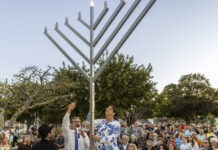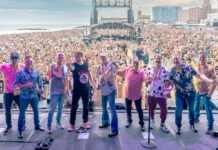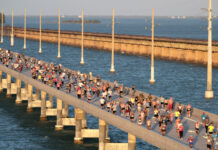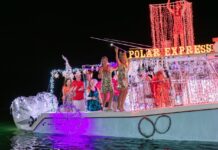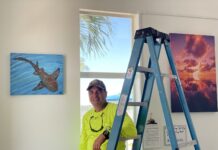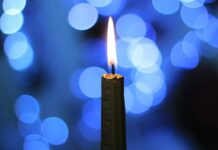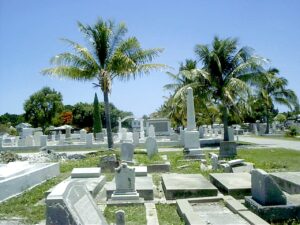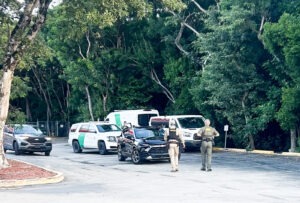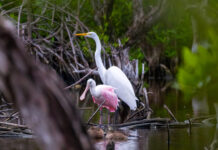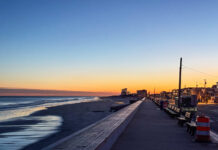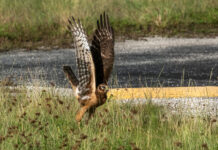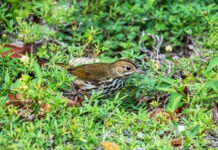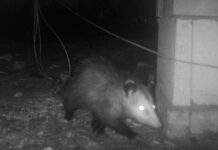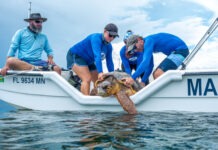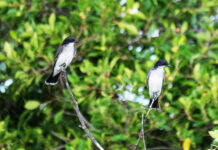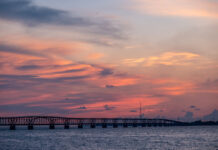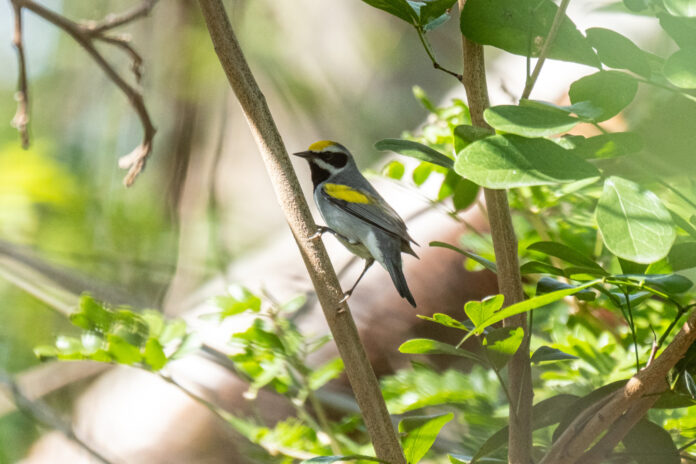
And some days you find yourself, a middle-aged man with a ponytail, binoculars and a long-lensed camera, hanging out just behind the bathroom of a beachfront state park, muttering the phrase, “Oh, you sexy little beast,” over and over again, and taking photo after photo. But it’s okay, it wasn’t too weird. Because it had rained the night before.
Spring migration in the Florida Keys is kind of an amazing thing. Over the course of a few weeks, millions of songbirds will fly through our airspace, principally at night. Most of them will have just completed a 90-mile water crossing, which is literally life and death for them. (Songbirds can’t swim.)
If the winds are right – or wrong, depending on how you look at it – some of those birds will have flown from as far as the Yucatan, a minimum of 400 miles across the Gulf of Mexico, blown off course by westerly breezes, which probably means they flew even farther.
There is a great, newish (at least to me) website called BirdCast.info which tries to predict how many birds will fly over a given part of the United States every night. It also uses local weather radar units to estimate how many birds actually do migrate. It’s kind of an amazing side use of the technology. (I’m not going to explain the science behind it here, because I bailed on engineering school and became an English major, but also because there is an excellent section called “A primer for using weather surveillance radar to study bird migration” on the BirdCast website.)
Last Thursday night, April 27, 582,500 birds were estimated to have migrated over Monroe County. Friday night: 140,700. Saturday night: 210,500.
While the Keys may represent the hard-won safety of the far shore for them, it doesn’t mean they will stop flying. If it’s early enough in the night or morning and the weather is favorable, they may just keep going. They can get piecemeal about their migration after they hit here.
On clear nights, it can be hard not to imagine them up there, guiding themselves by the stars or geographic landmarks or the magnetic forces of the planet (depending on the species), making their way through all that dark and open air.
If there’s some bad weather, though, the birds will often land once they get here to refuel and ride it out. Sometimes you can get hundreds or thousands of birds in a concentrated place, a phenomenon known as fallout.
Last Saturday night, though, April 29, it rained. And the wind was blowing about 30 knots. I would have gotten out to Fort Zach earlier, but it kept raining intermittently through the morning and I had a new camera body and wasn’t going to risk getting it wet.
I met Kevin Christman in the parking lot and we began to roam.
You build up your habits when you bird a place for a long time. I always tend to go into the amazingly shady hammock by the first parking lot, then I usually cross the berm by the moat, do a loop around the blacksmith shop, then walk the trail on top of the berm, then scan the open field, then head over toward the beach and look through all the native plant zones.
I wouldn’t say I’m haunted by all the birds I’ve seen in the park, but the place does trigger a lot of flashbacks. This is the part of the field where I was standing when I saw a young roseate spoonbill fly in off the ocean, land and start walking around. This is the part of the parking lot where I looked up and saw the clouds open to reveal a patch of blue sky and a flock of about 100 chimney swifts – 100 times more than I’d seen at one time in the Keys – a sight that lasted maybe 30 seconds before the clouds closed again and the birds disappeared. This is the shrub where Carl Goodrich, Lee Dunn, Tharon Dunn and I found a Cuban vireo, a bird that had never been recorded in North America before. This is the place where the guy who was about to get handcuffed rested his beer on the hood of the cop car.
The park was surprisingly quiet at first. Kevin and I made it through the hammock and over the berm, then crossed paths with my friend Rafael Galvez, behind the blacksmith shop. He was leading a group of about 10 birders who were supposed to be on the way to the Dry Tortugas for several nights, but the heavy winds had delayed them, so they were birding around Key West instead.
They were seeing a good number of birds, but there were a lot of twigs and leaves in the way, plus a lot of birders in a rather confined space, so Kevin and I looped around and worked our way into the small space behind the bathroom building. There were already two other birders back there, but there was a good bit of mid-air open space beneath the canopy, and a lot of branches for birds to land on. It was like a little mini nature theater, set up for a rolling cavalcade of avifauna.
Birds would come into view, show themselves for a bit, then slip off backstage. A few minutes later, another couple birds would show themselves. And it was a pretty good mix – American redstarts, indigo buntings, bay-breasted warblers, ovenbirds, Baltimore orioles, Tennessee warblers, blue grosbeaks, red-eyed vireos…
Kevin and I would roam out from there occasionally, and we saw a few other birds in other parts of the park. But for some reason, on this Sunday anyway, that little bit of space behind the bathroom was the place to be.
The bird of the day for me was a male golden-winged warbler. Part of it was how bright and sharp and fresh he looked in his new spring plumage, as if he was going off to the songbird prom or something. Part of it was the fact that I’ve only seen a golden-winged warbler once or twice in the Keys. And part of it was the way the bird moved in and out of the shadows, and behind leaves and twigs, giving glimpses of its parts like some kind of Sally Rand fan dancer.
It was the kind of bird that makes you hang out behind the bathroom building for hours on end because there is no way to ever see enough of it.
